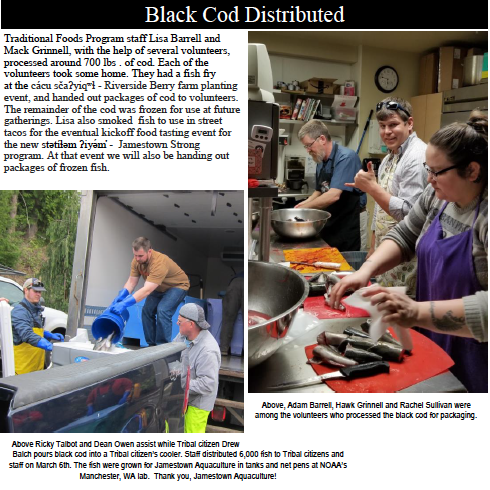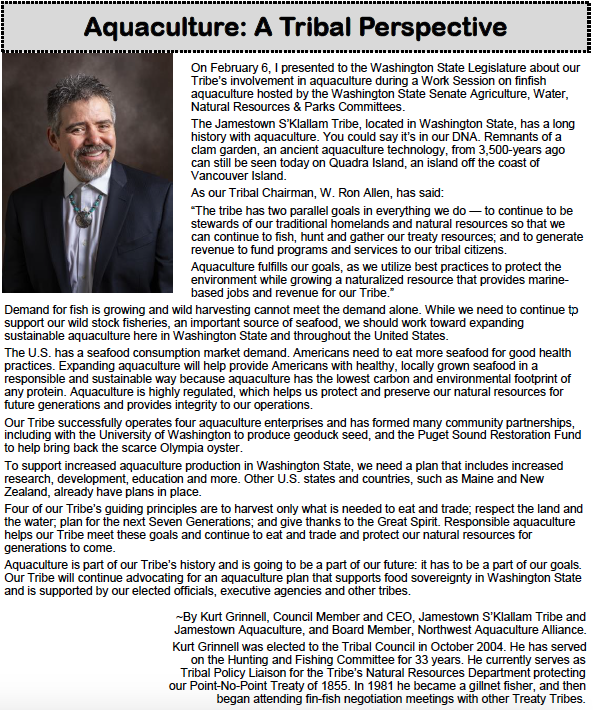PILOT SABLEFISH NET-PEN GROW-OUT
Pilot-scale net-pen grow-out of sablefish (“black cod”) by the Jamestown S’Klallam Tribe
Researchers partner with the Jamestown S’Klallam Tribe and others to find cost-effective ways to successfully raise sablefish, or “black cod,” for commercial-scale production.

